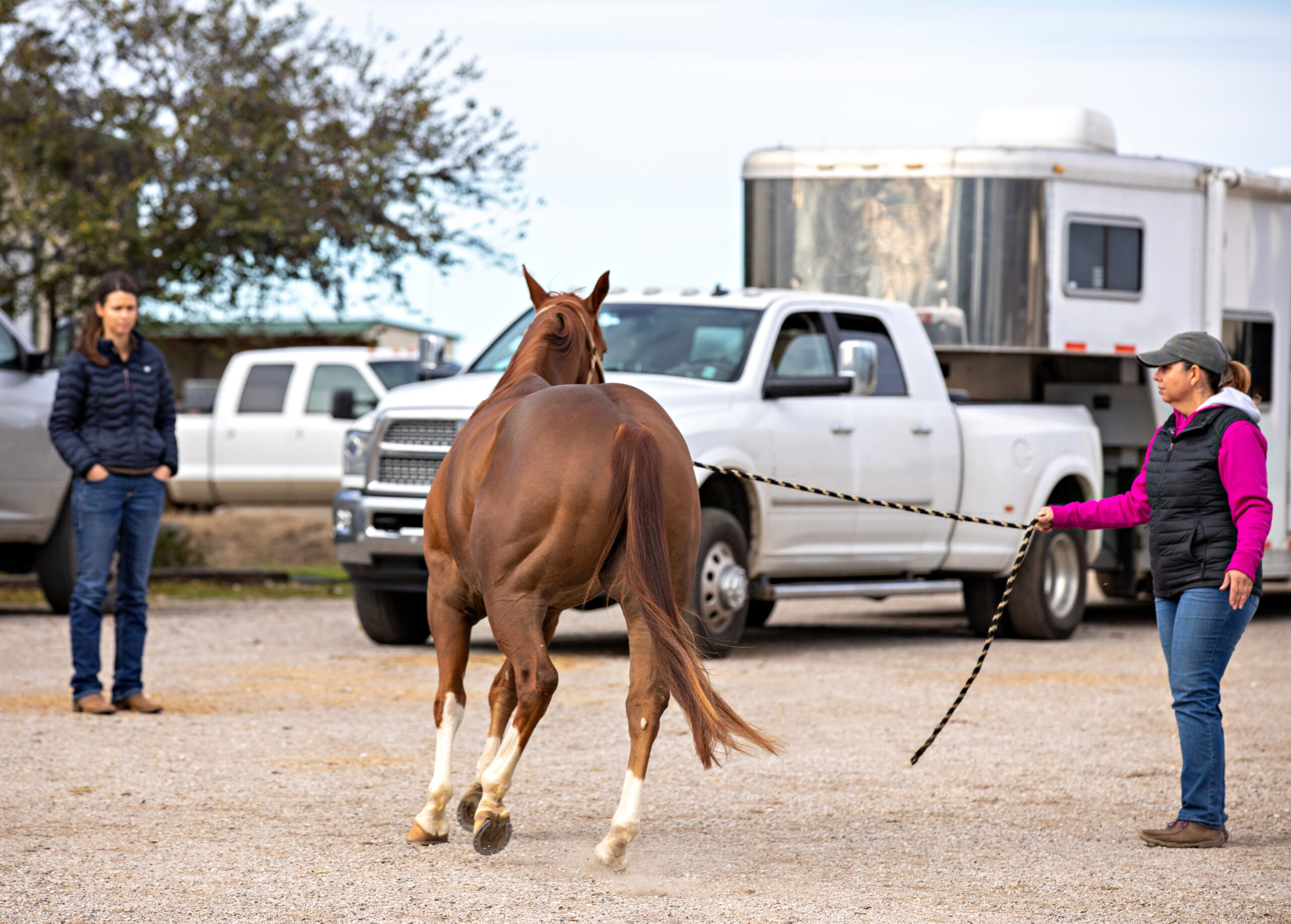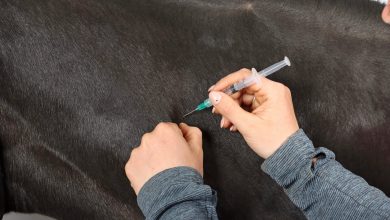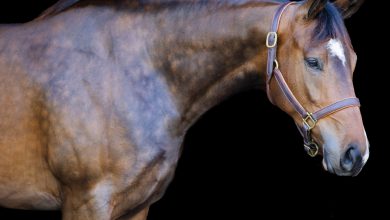So You Think Your Horse Has Arthritis…Now What?

This article is part of our Navigating Equine Arthritis Awareness Campaign, brought to you by American Regent Animal Health.
Joints make movement possible. Whether you rein, rope, barrel race, or trail ride, your horse’s joints take the brunt of the activity. Experts believe up to 60 percent of lameness is due to osteoarthritis, the progressive deterioration of cartilage cushioning joints. Arthritis can result when a healthy joint gets injured in a fall or twist. Or from day-to-day stress over a horse’s working life.
As with any disease, early detection enables you and your veterinarian to better manage your horse to help him feel and perform well. Particularly in conditions such as osteochondritis (developmental bone disease in young horses) or traumatic injuries, assessing and addressing issues affecting the joint can reduce the chances that arthritis will set in later. Many horses can continue to have athletic careers after arthritis is diagnosed—given the right management strategies and treatments.
Watch For These Warning Signs
- Lameness: Persistent lameness or stiffness, especially after rest or exercise, can indicate arthritis in horses.
- Reduced Range of Motion: Difficulty in bending joints or a noticeable decrease in flexibility.
- Swelling: Swollen or inflamed joints, particularly if warm to the touch, can be a red flag.
- Stiffness: Generalized stiffness, especially when first getting up from lying down, can suggest joint discomfort.
- Reluctance to Move: Hesitancy or reluctance to move, especially at certain gaits or when turning.
- Changes in Behavior: Behavioral changes such as irritability, aggression, or decreased willingness to work.
- Weight Shift: Shifting weight off one limb or favoring certain limbs while standing can signal joint pain and potential arthritis.
- Joint Crepitus: Audible cracking or popping sounds coming from the joints during movement can be a warning sign of arthritis.
- Muscle Atrophy: Muscle wasting or loss of muscle mass around affected joints due to reduced use or pain can be a visible indicator of arthritis in horses.

Now What?
Clinical Exam
Even with more advanced diagnostic tests being made available every year, a hands-on exam of your horse may still be the most important step for making an early diagnosis. Lameness, pain with flexion, and effusion are three early signs that a joint is in danger. And this means you should take a closer look, because early treatment at this stage could help prevent long-term damage. Call your vet as soon you see any of these signs. As the disease progresses, you’ll see swelling or thickening of the joint and a decreased range of motion.

Radiographs
Radiographs are the first thing most people think of when trying to diagnose arthritis in the joints. Yet they’re really most useful when damage is already severe. A radiograph won’t detect any of the early stages of joint disease, such as inflammation of the synovial lining, abnormal joint fluid, soft-tissue injuries, or inflammation of the underlying bone. Unless it’s so severe that the joint space is narrowed or cartilage defects extend to underlying bone, even cartilage damage won’t show up on radiographs in a majority of cases. Does that mean you should skip radiographs altogether? Absolutely not. Radiographs will show signs of advanced disease, and are still useful for monitoring progression in a horse with osteoarthritis.
Ultrasound
Once thought of only for diagnosing soft-tissue injuries, ultrasound of joints can now be an important part of diagnosing osteoarthritis, particularly of the stifle joint. Debris can be seen floating in the joint fluid. Thickening of the synovial lining and ligament injuries in the supporting structures also can be seen. Damaged cartilage that can’t be seen on radiographs will often be visible with an ultrasound exam. Many abnormalities can be seen with ultrasound in a joint that looks normal on a radiograph. More and more commonly, ultrasound is recommended for examination of a joint.
Nuclear Scintigraphy
Scintigraphy or “bone scan” involves injection of a radioactive substance into your horse’s bloodstream that then accumulates in areas of inflammation because of increased blood flow. This can be very sensitive for detecting inflammation of the subchondral bone, a potential early sign of osteoarthritis.
Magnetic Resonance Imaging (MRI)
MRI produces a detailed picture of all of the structures of the joint. This can be the most specific diagnostic tool for identifying joint disease at any stage of the game. MRI exams may be performed either standing or under general anesthesia. In general, standing MRI is best for examining structures from the fetlock down, where movement is less likely to be a problem, while general anesthesia will be necessary for joints above the fetlock.
Looking Forward
If early diagnosis is the key, wouldn’t it be great if a simple blood test could give evidence of early joint disease? It sure would, and some research has identified specific substances called “biomarkers” that are detectable not only in the joint fluid, but also in the bloodstream of horses with compromised joints.
Although these tests aren’t currently available to most horse owners, they look promising in the research setting, and may someday be routinely offered by your veterinarian. Regular blood tests for biomarkers of at-risk horses could identify those with early, otherwise undetectable joint disease. Once identified, these horses could be carefully examined, and treated early—potentially halting osteoarthritis in its tracks.
What Can You Do to Help Your Horse?
Many things! Consistent exercise to your horse’s comfort and athletic level is great for keeping joints limber. Depending on the severity of your horse’s condition, exercise can range from simple pasture turnout to a regular riding schedule.
[Make These Small Changes to Keep Your Horse Comfortable]Senior horses with multiple arthritic joints often do best when they have 24/7 access to a paddock or pasture (along with adequate shelter). Be sure to maintain pastures and arenas so your horse isn’t slogging through deep or uneven footing.
Keeping your horse at an ideal weight—and especially not overweight—will reduce load bearing on painful joints. Regular skilled farrier work also helps reduce pain, particularly when arthritis affects the lower limb joints.
Finally, knowing your horse well so you can tell when he might need extra help or a visit from your vet is key to his continued comfort.



